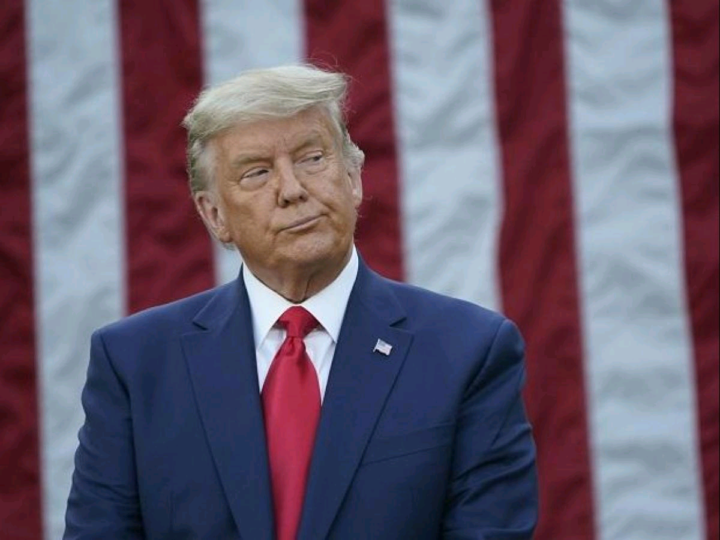United States President Donald Trump has reignited debate in the global entertainment industry after unveiling plans to impose a 100 percent tariff on films produced outside the country. The proposal, announced through one of his social media statements, is being described as one of the boldest trade-related measures targeting the cultural sector, raising questions about legality, practicality, and the future of America’s global film dominance.
Trump argued that American cinema has been undermined by what he termed “foreign theft” of the movie-making business, accusing other nations of attracting production through heavy subsidies and tax incentives. According to him, the industry has been “ripped away” from American workers, and a steep tariff would force productions back to U.S. soil while restoring the nation’s cultural supremacy. This is not the first time the idea has surfaced; earlier in the year he floated similar remarks, but this latest announcement suggests a renewed seriousness.

The international nature of modern filmmaking complicates the feasibility of such a policy. Many big-budget movies are co-productions spanning several countries, with shooting, financing, and post-production often carried out in multiple locations. A blanket tariff could spark confusion about what qualifies as a foreign film. Would a movie partially shot in Canada or edited in London be treated as imported? How would tariffs apply to digital films streamed across borders rather than shipped as physical reels? These unanswered questions underscore the challenge of translating Trump’s rhetoric into enforceable law.
The film industry has reacted with swift concern. Studio executives warn that such a measure could backfire by raising costs for both producers and consumers, potentially sparking retaliation from other countries that might impose their own restrictions on American entertainment exports. Critics also highlight that Hollywood’s global reach has been built not only on storytelling but on partnerships with international financiers, actors, and production houses. Punitive tariffs, they say, risk unraveling these networks and reducing U.S. cultural influence abroad.
A further complication is the distinction between goods and services. Traditional tariffs target physical imports, but films today are often distributed digitally. Legal experts argue that taxing creative content presents both technical and constitutional challenges. Even if such a system were set up, determining the point of import and enforcing compliance would be a logistical nightmare. Some speculate the measure might morph into a special tax on foreign content or quotas restricting its availability, rather than a conventional tariff.
Legal precedent also casts doubt on Trump’s authority to enforce such a sweeping policy. Earlier this year, parts of his “Liberation Day” tariff orders on imports were struck down by federal courts for overstepping presidential powers. That case has become a touchstone in debates about how far executive authority can extend in trade policy. Should Trump attempt to unilaterally impose a film tariff, it would likely face immediate legal challenges and judicial scrutiny.
While the White House has yet to provide details, the political response within the United States has been largely critical. California Governor Gavin Newsom, whose state hosts the lion’s share of the film industry, condemned the proposal as harmful to jobs and economic growth. He pledged to expand film tax credits in California to keep productions local but stressed that punitive tariffs were not the solution. Lawmakers representing states with strong creative sectors also voiced concern, arguing that positive incentives would better serve America’s film workforce.
Still, Trump has his supporters. Some unions and domestic production advocates contend that runaway production has cost American jobs and that drastic measures are necessary to reverse the trend. They argue that the policy, even if difficult to implement, sends a powerful message that American creativity should be nurtured at home rather than outsourced. A smaller group of supporters even frame the measure as a national security concern, warning against excessive dependence on foreign studios and distribution channels.
Global reaction, however, has been skeptical. Many fear that a unilateral tariff would spark tit-for-tat retaliation, with other nations slapping duties on American films, television, music, or digital content. Such a move could endanger the billions of dollars Hollywood earns annually from overseas markets, where American films dominate box offices. Co-production treaties and cultural exchange agreements may also come under strain, potentially fragmenting decades of international collaboration.
For consumers, the consequences could include higher ticket prices, fewer foreign titles available in theaters or on streaming platforms, and a narrower range of content. Smaller film markets, which rely on U.S. partnerships, could also suffer if the tariff discourages collaboration. The ripple effects would extend beyond entertainment into broader trade relations, potentially complicating negotiations on unrelated sectors such as technology, agriculture, or manufacturing.
Ultimately, Trump’s proposal illustrates the tension between economic nationalism and globalization in the cultural economy. The U.S. film industry remains one of the nation’s most powerful exports, both financially and symbolically. Any attempt to reshape it through tariffs would touch on issues of commerce, diplomacy, and culture. Whether the plan is a serious policy or a political gesture remains unclear, but it has already unsettled the industry and placed the future of international filmmaking under scrutiny.
As debate intensifies, stakeholders will watch closely for further details or possible legislative moves. For now, Trump’s announcement has injected fresh uncertainty into an industry already grappling with post-pandemic recovery, shifting consumer habits, and technological disruption. If implemented, the tariff could mark one of the most radical interventions in the history of U.S. cultural trade policy, with repercussions far beyond America’s borders.
Support InfoStride News' Credible Journalism: Only credible journalism can guarantee a fair, accountable and transparent society, including democracy and government. It involves a lot of efforts and money. We need your support. Click here to Donate
